Theodore Postol is a retired MIT physics professor who was a consultant to the Pentagon on nuclear weapons and missile defense. He recently published a presentation on Iran’s nuclear weapons capability, which he summarized in a YouTube interview. Professor Postol explains, in considerable detail, how the construction of a deliverable fission bomb is well within the capabilities of Iran. His full presentation .PDF is available here, and I will show some of the key slides. Curiously,this information has not been reported in the mass media. I will explain why this is a big story, and why it has been suppressed.
How Iran Can Build a Bomb
To make an operational nuclear weapon, Iran needs three things:
1. Fissile material
Using information gathered by the International Atomic Energy Association (IAEA) monitoring Iran’s nuclear activities, Professor Postol lays our a chain of reasoning starting with the current stockpile of 60% enriched U235 and ending with the creation of bomb-grade U235 sufficient for making multiple fission bombs. There is no evidence that the 60% enriched material was destroyed during the recent attacks by Israel and the U.S., and Iran would have been highly motivated to securely store this relatively small quantity of material.
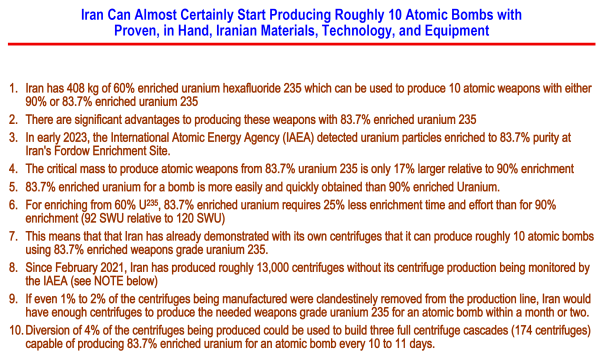
Postol July 24, 2025 presentation page 2
A key point of this presentation is that Iran’s existing stockpile of 60% enriched U235 can be further enriched to a weapons grade of 83.7% with a fraction of the resources required to perform the original enrichment from U238, and that the production facilities needed would easily fit in a small commercial building.
2. A compact bomb design
The simplest design for a nuclear bomb uses U235 and creates a critical mass by very rapidly joining sub-critical portions of the fissile material by explosive means. This was the method used in the atomic bomb that the U.S. dropped on Hiroshima. The physics determining the results are so straightforward that no testing is required. The explosive yield of a missile-deliverable rudimentary warhead of this type is relatively low (10-20 kilotons) compared to plutonium fission or thermonuclear weapons, but it is sufficient to destroy a city.
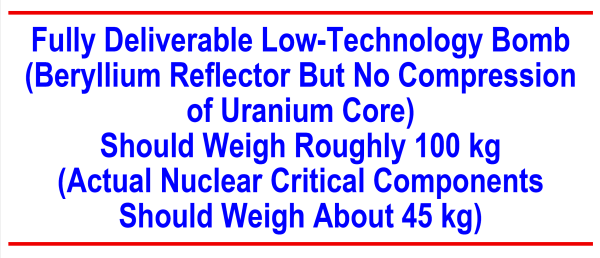
Postol July 24, 2025 presentation page 27
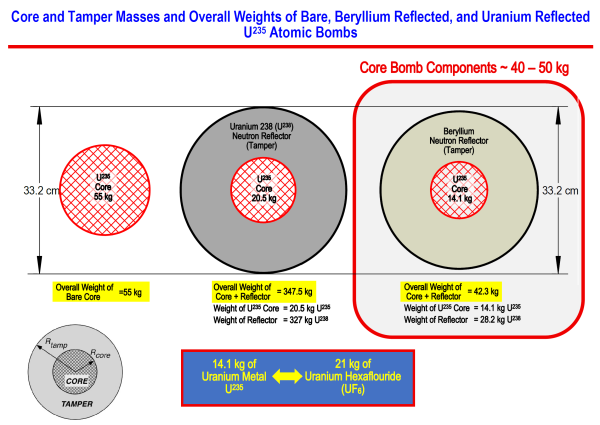
Postol July 24, 2025 presentation page 28
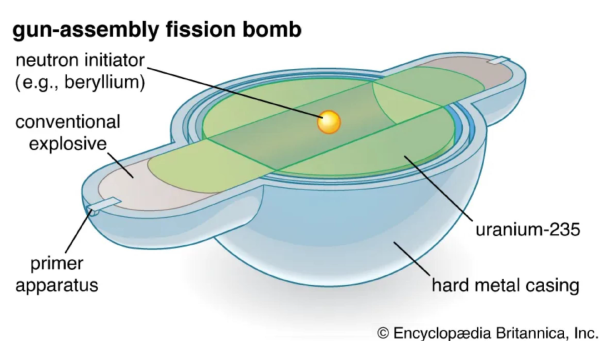
Postol July 24, 2025 presentation page 30
The estimated explosive yield of the bomb design described by Professor Postol, 7 to 20 kilotons, would be roughly equivalent in destructive power to the bomb dropped on Hiroshima in 1945 (15 kilotons). Hiroshima’s population at that time (350,00) was roughly the same size as that of present day Haifa (290,00).
3. An effective delivery system
Iran possesses multiple missile systems capable of delivering a 100 kg nuclear payload from Iran to Israel, including Sejjil-2, Khaybar Shekan, Fattah, and Dezful. All of these enable nuclear warhead delivery and have additional payload capacity for decoys to counter interceptor missiles. Maneuvering and hypersonic designs (e.g., Khaybar Shekan and Fattah) further complicate Israeli defenses.
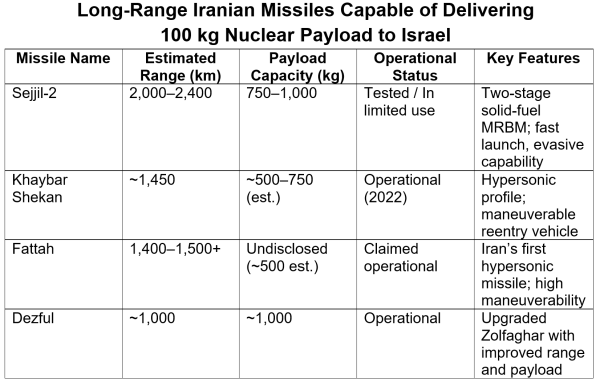
Strategic Implications of an Iranian Bomb
The main value for Iran of having a nuclear weapons capability is deterrence. Israel can no longer threaten Iran with complete destruction through nuclear attack or a full-fledged U.S. ground invasion. Even a few nuclear missiles could entirely devastate Israel and inflict unacceptable casualties on U.S. forces in the region.
While Israel has a sophisticated civil defense system oriented toward conventional and chemical missile threats, it lacks the infrastructure to protect the general population from radiation exposure following a nuclear attack. There are limited radiation-hardened shelters, no mass fallout protection for urban populations, and no publicly disclosed national-scale radiation response system. Israel’s nuclear defense strategy leans heavily on deterrence and interception, not population shielding against nuclear aftermath.
A 10-kiloton nuclear detonation over Tel Aviv could cause up to 100,000 immediate deaths and half a million total casualties, while a strike on Haifa could result in 40,000–70,000 deaths and 300,000+ injured, especially if industrial zones are hit. These are conservative estimates; actual numbers could be higher depending on detonation specifics and emergency response capability. The economic, environmental, and geopolitical consequences would be catastrophic. Nuclear strikes against Iran by Israel would be similarly horrific.
It is likely that Iran will follow the example of Israel and refuse to declare its possession of nuclear weapons. This will shield the program somewhat from criticism, but enough information will be leaked or discovered to make the nuclear capability credible. It is a sad irony that aggressive military action to prevent Iran’s development of a nuclear weapon may have finally convinced Iran that such a development is necessary.
The Silence of the Sheep
The absence of commentary in the mainstream media on Professor Postol’s declaration of an Iranian nuclear capability can be explained mainly by the timidity of today’s mass media. Reporting this story would make Trump’s declaration of ending Iran’s nuclear program appear foolish. This could trigger punitive action by the Trump administration against the business interests of the media owners. Editors and journalists may conceal their political fears by declaring that there is no confirmation of Postol’s assertions by the U.S. intelligence community, but this is the same community that has been spinning like a weather vane in the political winds, alternately confirming and denying Iran’s nuclear weapons program for years.
Conclusion
Based on Professor Postol’s arguments, it is very likely that Iran either already has a deliverable nuclear weapon, or that it could produce one in the very near future. This development means a dead end for Israel’s strategy of eliminating Iran as a regional adversary. Israel will not be able to persuade the U.S. to invade a nuclear-armed Iran, and Israel will no longer be able to threaten Iran with a nuclear strike without fear of nuclear retaliation. The misguided militaristic foreign policies of Israel and the U.S. have resulted in another instance of nuclear weapons proliferation, and more will likely follow as long as these nations persists in using military force as their primary geopolitical tool. If Israel and the U.S. continue to live by the sword, they will find nuclear swords appearing in the hands of other nations.

